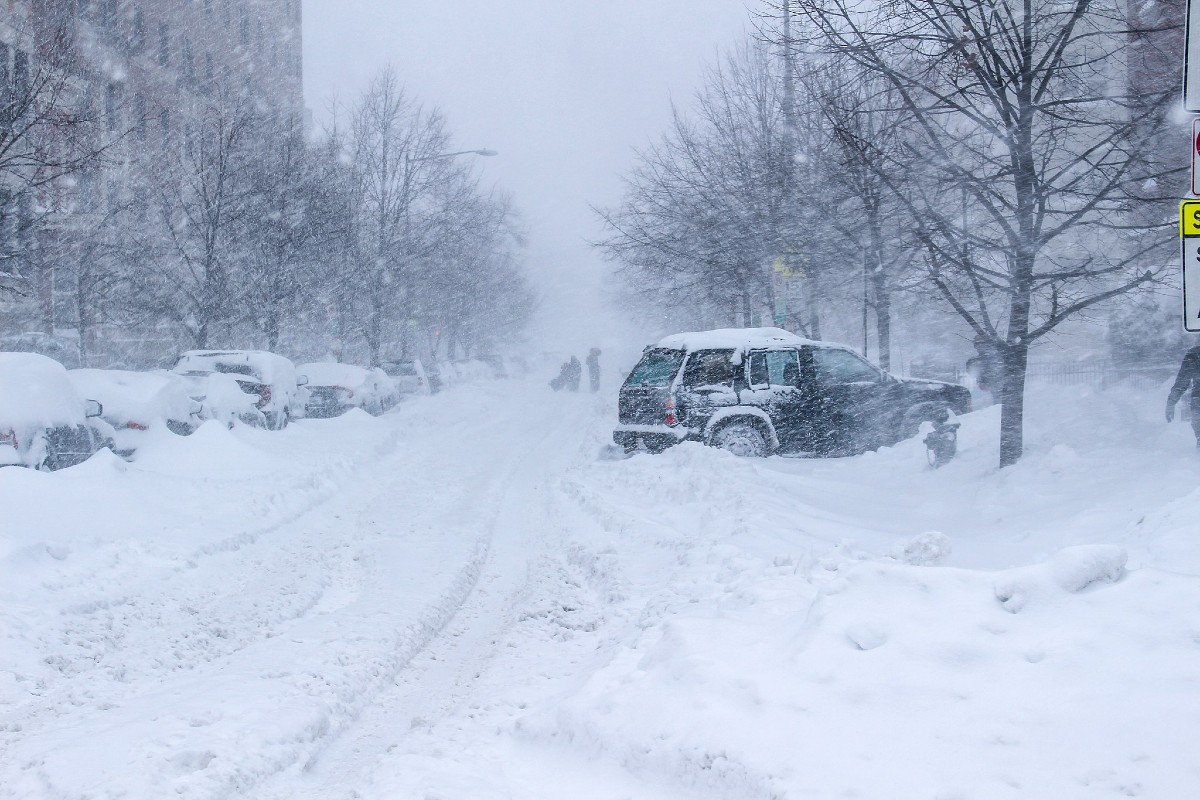Old news that is more relevant every day: Planet Earth continues its substantial warming, threatening and affecting life, liberty, and property with every new climate disaster.
The most recent example? Nearly 30 people died in Buffalo’s most recent winter storm, per CNN, as the area was hit with more than 50 inches of snow. This follow’s last month’s winter storm, which dumped the fifth-highest amount of snow the region has ever experienced in a three-day period. More than 80 inches of snow stuck on the ground a full month before the official beginning of winter (per Fox Weather). Of the four Buffalo winter snowstorms preceded by last month’s dump, three of them occurred in the last 27 years — and Buffalo is far from unique among the world’s cities experiencing record snowstorm weather events. (Just look at the most recent weather forecasts across the country.)

According to the National Oceanic and Atmospheric Administration, 2021 was only the sixth-warmest year across global land and ocean surfaces. This was middling relief from 2019 and 2020, the second- and third-warmest years on record, respectively. Neither was quite hot enough to break 2016’s record as the hottest year we’ve seen since record-keeping began in 1880. Need more evidence of global warming? Per the NOAA, 2013 to 2021 all rank among the 10 warmest years on record.
Warmer temps mean wilder weather swings because melting water means more atmospheric precipitation, hence wicked weather during winter and cataclysmic hurricanes, typhoons, and storms during warmer months (per the Environmental Defense Fund). Just looking back over the last six years, we find some of the worst winter storms on record.
2021
Just last year, a widening jet stream dipped deep into the middle of the country to drop one of the worst winter storms to ever hit the state of Texas. The storm accounted for least 210 deaths in Texas alone in what amounted to the deadliest winter storm in North America since the 1993 Storm of the Century (per the NOAA). The Texas comptroller cited Federal Reserve Bank of Dallas estimates that storm-related financial losses ranged from $80 billion to $130 billion.
The National Weather Service issued winter weather alerts to more than 170 million Americans, with over 9.9 million Americans and Mexicans experiencing blackouts, according to Time magazine. An Electric Choice list identifies this as the worst loss of power since the 2003 Northeast blackout.
After the Pacific Northwest got buried in snow and Texas froze in areas where insurers did not even cover winter weather (guess how that turned out . . .), in the South, tornadoes sprang up from pressure drops. These twisters cruised across five states before the worst damage occurred in the Ocean Ridge Plantation neighborhood near Sunset Beach, North Carolina. Whirlwinds demolished many residences, leading to three deaths and 10 injuries (per Weather.gov).
2020
Speaking of the jet stream’s apparent ire for Texas, 2021 may have been the worst ice storm that the Lone Star experienced, but it certainly wasn’t the first. In the last week of October 2020, a cold weather front covered the state, dumping snow as far south as Midland. It also served up a debilitating ice storm that continued into Oklahoma (per Weather Underground).
This being the end of October, hurricane season was still in full force. As the mid-South froze, Hurricane Zeta beat on Louisiana and the Southeast. Hurricane Zeta’s center over southeast Louisiana was only about 500 miles away from the storm to the north. Per the Global Snow Lab at Rutgers University, this was North America’s most widespread October snow since 1967.
2019
In 2019, the jet stream took a break from battering Texas to bring not the first, but the second polar vortex to the upper Midwest and Great Lakes region in three years (before moving on to Europe in 2021). Polar weather brought a brutal Arctic blast into several states and new record-low temperatures to already brutalized northern climes.
According to The Guardian, Chicago thermometers dropped to 20 degrees below zero. Factoring in the wind chill, it felt about 100 degrees warmer the same day in Los Angeles. In Minnesota, it was even colder. Temperatures fell to 50 degrees below zero and broke records set just a couple of years earlier. The chill was so bad that the U.S. Postal Service made the rare decision to cease mail delivery from the Dakotas down to Ohio. “Neither snow nor rain . . . nor gloom of night” will stop the mail, but apparently, skin-burning cold will.
2018
In the back end of winter in 2018, the jet stream’s wrath turned yet again onto Texas, dropping hen egg-sized hail across areas south of Dallas (per PBS). Winter Storm Xanto brought blizzard-like conditions to the Great Lakes and tropical storm winds across the South and Gulf Coast. While tornadoes ripped across Arkansas, record snowfall fell upon the upper Midwest and Great Lakes (per Weather Underground). PBS cited not only hundreds of canceled flights, but also highway closures across the region.
2016
We’re going to skip the so-called Pi Day blizzard Noreaster on March 14, 2017, in favor of the much more destructive Winter Storm Jonas in late January 2016. Pummeling the Northeast with the most powerful storm it’d seen in at least 60 years, Jonas smashed previous snowfall records and beat down on at least 100 million people’s lives.
Weather.gov recorded 42 inches of snow in West Virginia, a foot of snow in at least 14 states, and more than 2 feet of buildup in six states. This was enough to approach (or break) record snowfalls in at least 20 locations across 10 states. The Atlantic brought in expert Chris Christopher, a macroeconomist at the data analytics firm IHS Global Insight, to estimate the economic impact. The damage? Between $500 million and $1 billion in the four days Jonas battered the region.
The end?
It’s worth harping on the point that these berserker “storms of the century” — once rare, one-off occurrences — now arrive almost every single year, thanks to warmer weather. According to the NDF, winter in the continental U.S. has warmed “more than four-and-a-half times faster per decade than over the past 100 years.” As a consequence, what used to be typical winter temps feel more frigid. This is just one of the myriad gifts climate change will deliver in the coming years.



